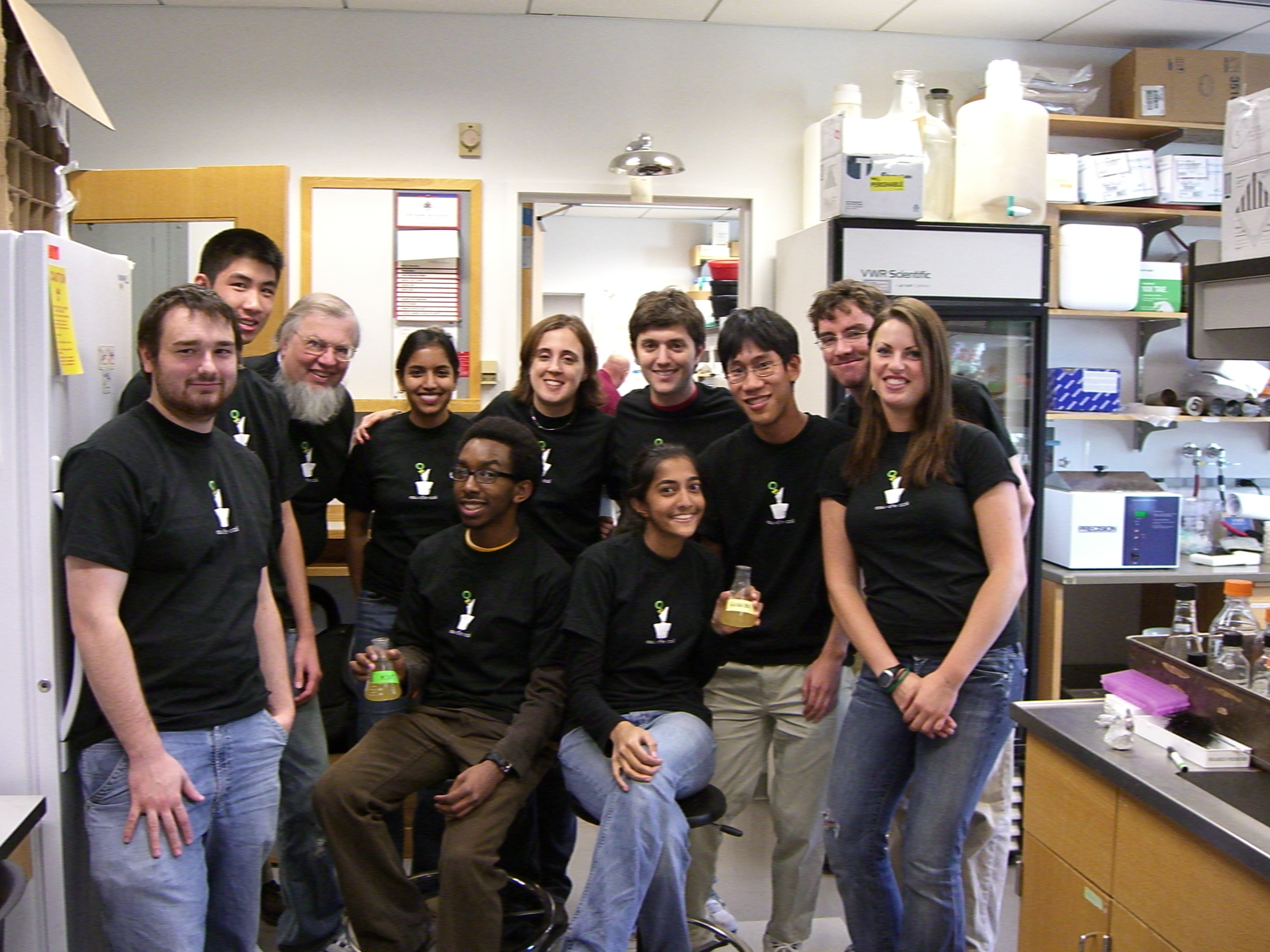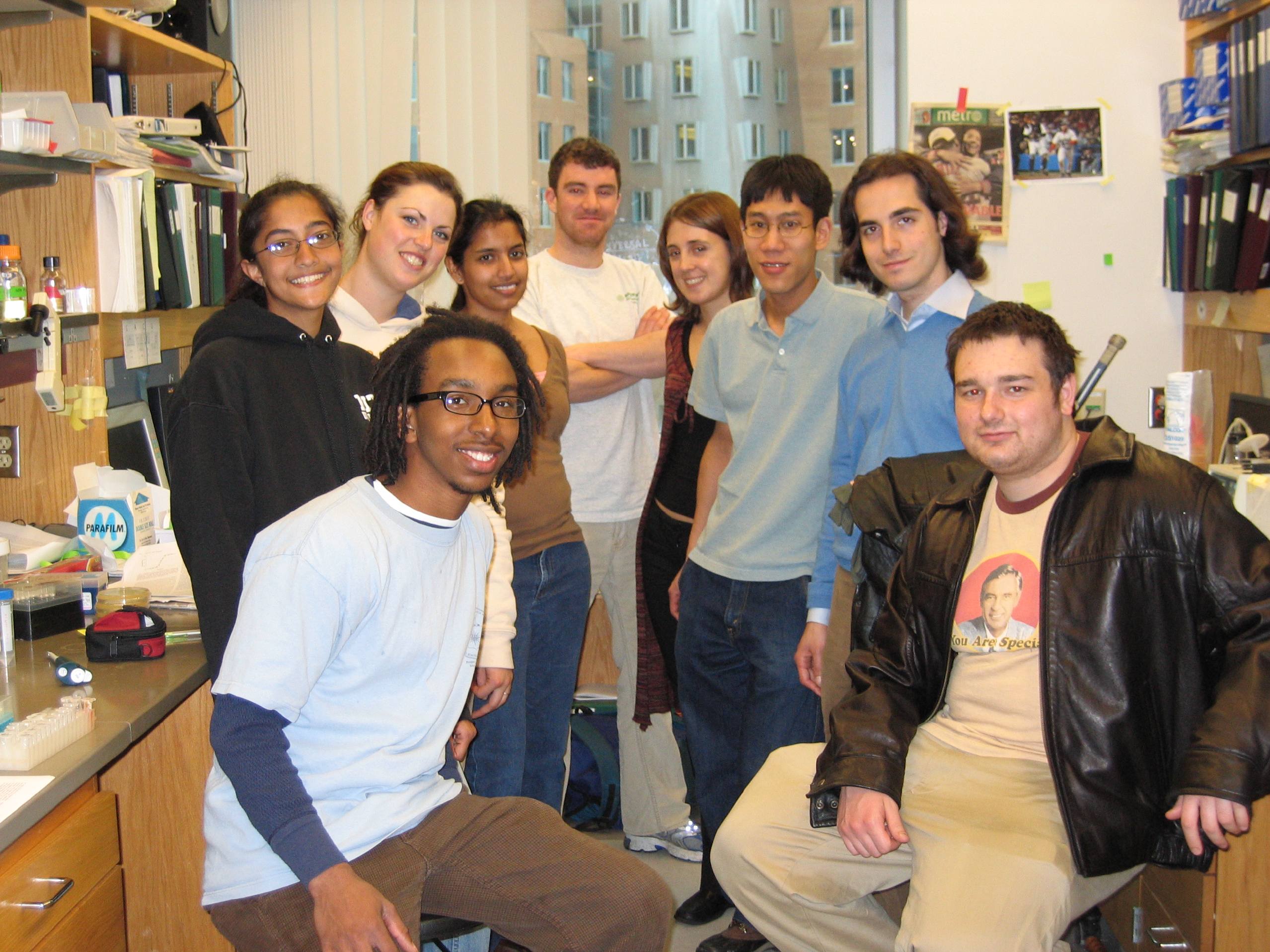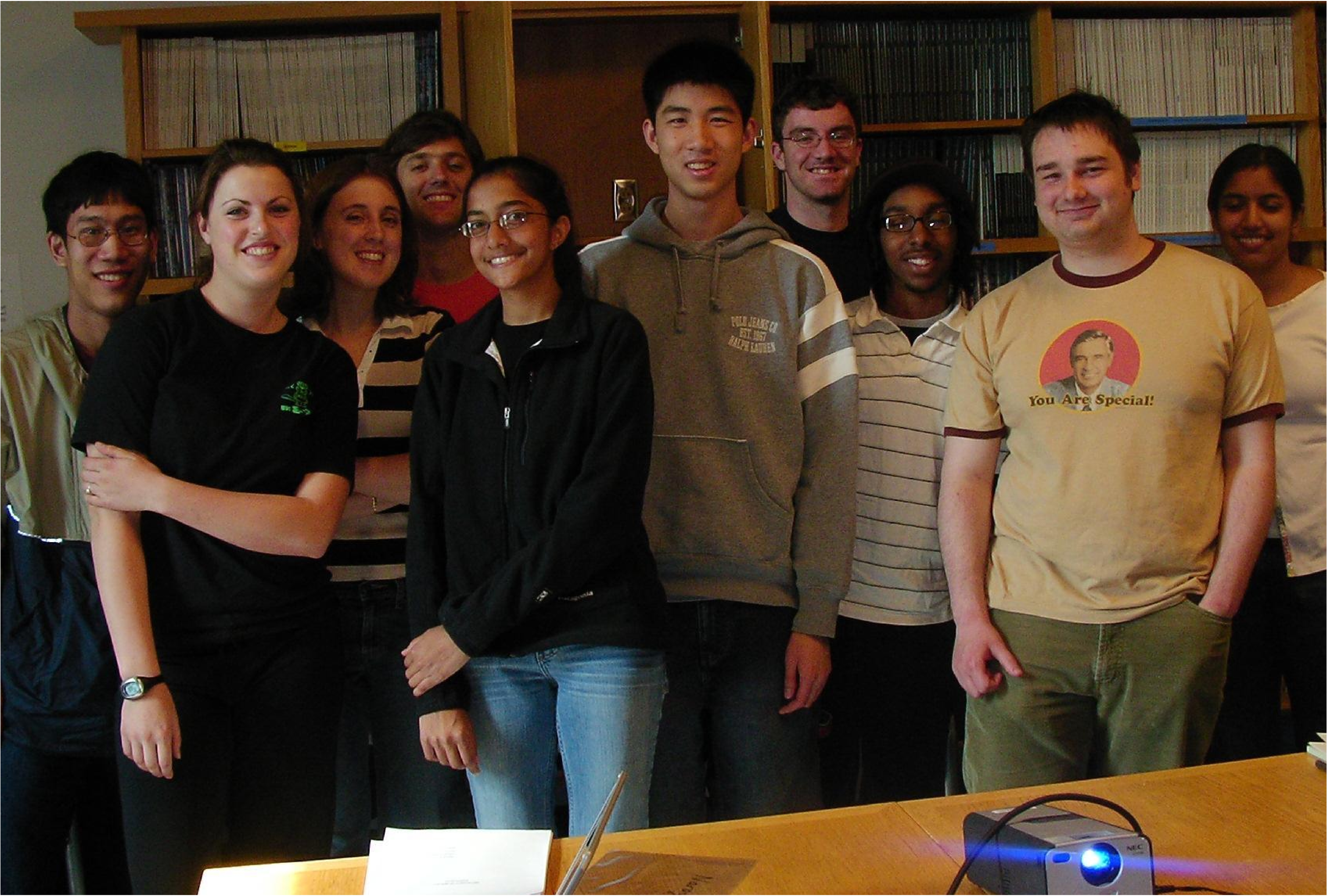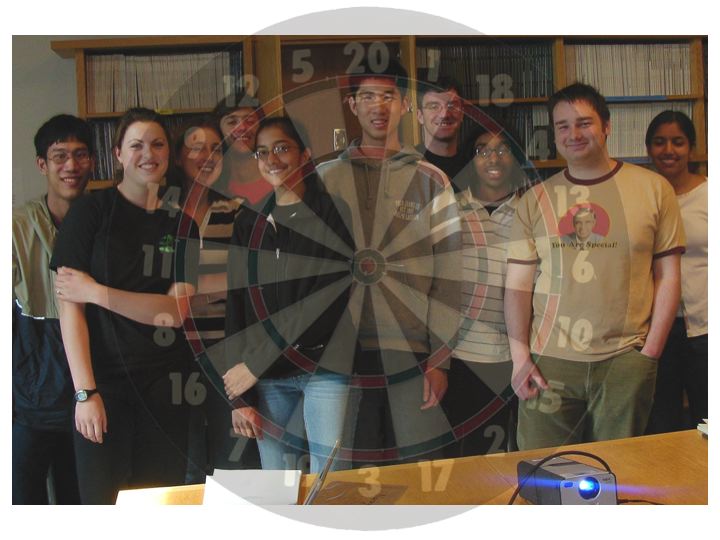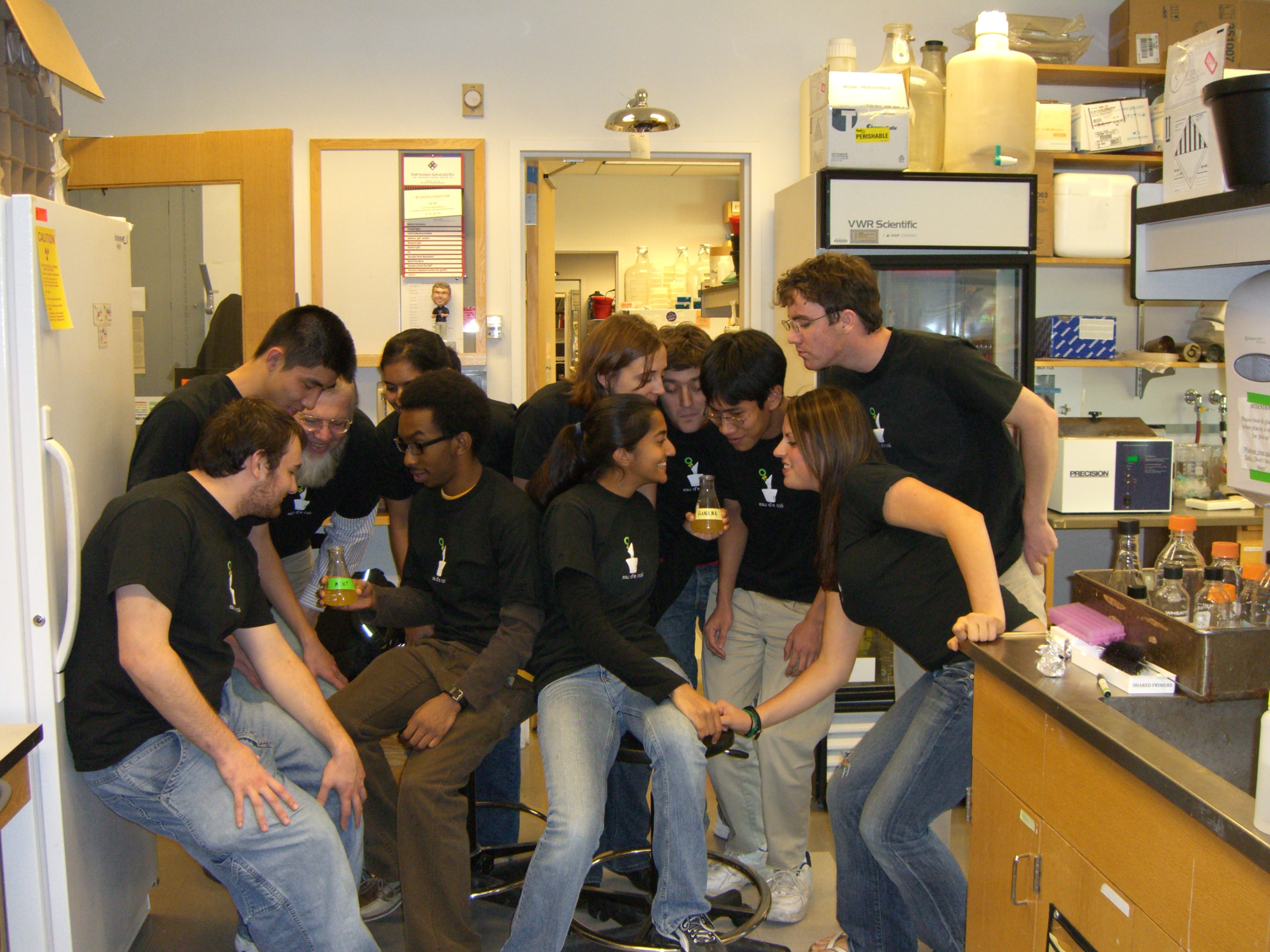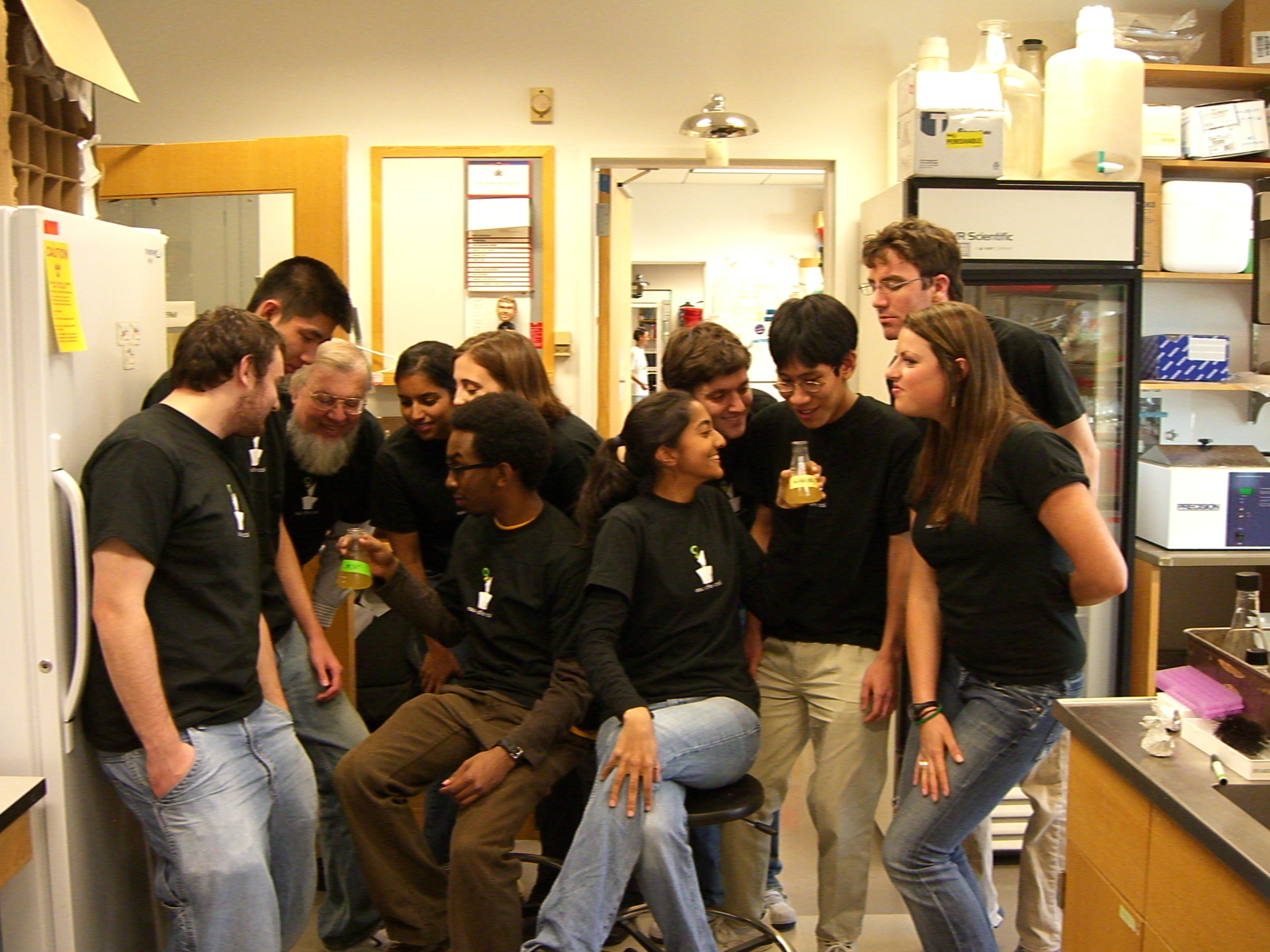MIT 2006
From 2006.igem.org
(→Parts) |
|||
| Line 51: | Line 51: | ||
# <bbpart>BBa_J45992</bbpart>: osmY stationary phase promoter (see [http://openwetware.org/wiki/IGEM:MIT/2006/osmY_Results results] of connecting osmY to GFP) | # <bbpart>BBa_J45992</bbpart>: osmY stationary phase promoter (see [http://openwetware.org/wiki/IGEM:MIT/2006/osmY_Results results] of connecting osmY to GFP) | ||
| + | # <bbpart>BBa_J45004</bbpart>: BSMT enzyme that converts salicylic acid to methyl salicylate (wintergreen) | ||
====Devices==== | ====Devices==== | ||
Revision as of 21:46, 30 October 2006
This page is a summary of the work done by the MIT 2006 iGEM team. Much more information is available on [http://openwetware.org/wiki/IGEM:MIT/2006 OpenWetWare].
Members
The MIT iGEM team has 5 undergraduates, 5 graduate student advisors, and 2 faculty advisors.
|
|
Email us: team AT igem.mit.edu
Project description
This summer, MIT's iGEM 2006 team engineered Escherichia coli to produce a wintergreen scent during exponential phase and a banana scent during stationary phase using only endogenous metabolites. Thus, our project demonstrates that
- It is indeed possible to design, build and test a synthetic biological system over the course of a summer.
- Biosynthetic devices that produce scented compounds can be successfully engineered in E. coli.
- Biosynthetic devices can be purposefully regulated via transcription based control devices.
Motivations
Our project focused on engineering Escherichia coli to produce different compounds that smell fragrant. Since scents can both act as natural reporters and have a diverse array of applications, they represent a promising but thus far unexplored area of synthetic biology.
Future applications of this work that we envision include ...
- Improving the workplace environment for microbiologists working with Escherichia coli since E. coli produce a natural foul scent.
- Porting our system to bacterial species involved in bioremediation.
- Implementing our system in bacteria responsible for bad human odor in the mouth, armpits and feet.
Contributions
The following parts, devices, chassis systems have been designed, built and tested to demonstrate that they work.
Parts
All of our parts are on the [http://partsregistry.org/cgi/partsdb/pgroup.cgi?pgroup=iGEM2006partsregistry.org/cgi/partsdb/pgroup.cgi?pgroup=iGEM2006&group=MIT registry].
- BBa_J45992: osmY stationary phase promoter (see [http://openwetware.org/wiki/IGEM:MIT/2006/osmY_Results results] of connecting osmY to GFP)
- BBa_J45004: BSMT enzyme that converts salicylic acid to methyl salicylate (wintergreen)
Devices
- A biosynthetic device that converts salicylic acid to methyl salicylate (or wintergreen) (BBa_45100).
- A biosynthetic device that converts isoamyl alcohol to isoamyl acetate (or banana smell) (BBa_45200).
- A PoPS source that is only active during stationary phase (BBa_45992).
- A PoPS source that is only active during exponential phase.
Chassis
We have obtained from the Yale Genomic Stock Center, a strain of E. coli that does not have a noticeable smell (i.e. an indole knockout). This strain is the chassis of choice for all of our biosynthetic devices (BBa_J45999)
Systems
- Escherichia coli capable of producing a wintergreen scent autonomously (without addition of any precursors). (cotransformation of BBa_45300 and BBa_45180).
- E. coli capable of producing a banana scent autonomously (without addition of any precursors). (cotransformation of BBa_J45400 and BBa_J45250).
Future work
In the future, we envision doing the following ...
- Porting the biosynthetic device that synthesizes isoamyl acetate to yeast to make banana bread.
- Porting the biosynthetic device that synthesizes methyl salicylate to Pseudomonas fluorescens, a species commonly used in bioremediation.
- Carrying out more extensive, quantitative characterization of our biosynthetic devices using gas chromatography.
